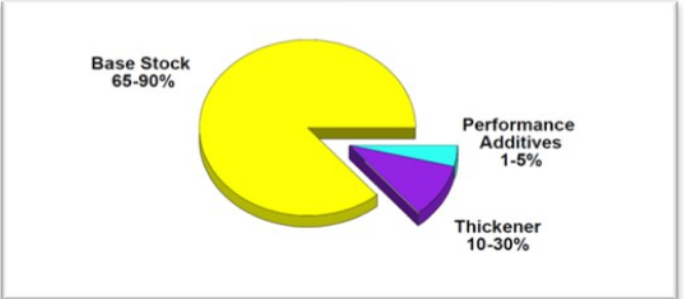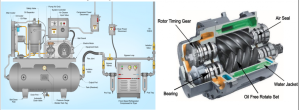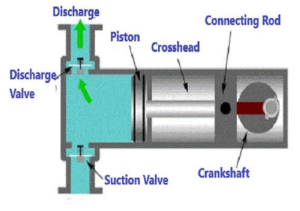Greases Basics
The American Society for Testing and Materials (ASTM) defines lubricating grease as: “A solid to semifluid product of dispersion of a thickening agent in liquid lubricant. Other ingredients imparting special properties may be included” (ASTM D 288, Standard Definitions of Terms Relating to Petroleum).
Grease Anatomy
Essentially there are three components that form lubricating grease. These components are oil, thickener and additives. The base oil and additive package are the major components in grease formulations, and as such, exert considerable influence on the behaviour of the grease. The thickener is often referred to as a sponge that hold the lubricant (base oil plus additives).
Base Oil
The base oil in greases can be either mineral oil or synthetic oil-based. In temperature extremes (low or high), a grease that utilizes a synthetic base oil will provide better stability.

Thickener
The thickener is a material that, in combination with the selected lubricant, will produce the solid to semifluid structure. The primary type of thickener used in current grease is metallic soaps. These soaps include lithium, aluminum, clay, polyurea, sodium and calcium. Lately, complex thickener-type greases are gaining popularity. They are being selected because of their high dropping points and excellent load-carrying abilities.
Complex greases are made by combining the conventional metallic soap with a complexing agent. The most widely used complex grease is lithium based.
Additives
Additives play several roles in a grease. These include enhancing the existing desirable properties, suppressing the existing undesirable properties, and imparting new properties. The most common additives are oxidation and rust inhibitors, extreme pressure, antiwear, and friction-reducing agents.
In addition to these additives, boundary lubricants such as molybdenum disulphide (moly) or graphite may be suspended in the grease to reduce friction and wear without adverse chemical reactions to the metal surfaces during heavy loading and slow speeds.






